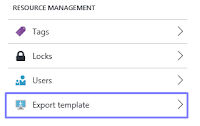
Give your Form Flow based chat bot new smarts with LUIS FormFlow is an attractive API offering for building chat bots in the Microsoft BOT Framework in that it greatly simplifies the conversation data management you otherwise need to deal with yourself, to have a useful dialogue with a human. With FormFlow, you set up predefined processes (or guided conversations ) that you would like your human to navigate through, e.g. Bot: Hello and welcome to Customer Support! Bot: I'm Botty. What is your name? Human: Susan. Botty: Great to meet you, Susan! How can I help you today? You can ask me to 1. Get me a Sandwich , 2. Book an appointment or 3. Rant incessantly . Susan: Please get me a sandwich Botty: Are you sure you can handle the heat ? Susan: Yes Your Hot sandwich is coming right up! The above is accomplished by creating a serializable poco with your Field s, accompanied by two helper methods to turn the poco into a Form : [Seriali




